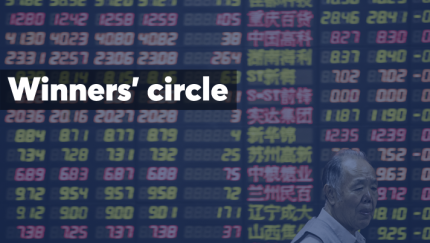MiFID II, a set of new regulations that will impact both asset managers and sell-side research firms, was implemented in the EU earlier this year. As a result, investment management firms will, for the first time ever, be required to pay for sell-side research and other services, and to disclose those costs.
Traditionally, sell-side research had been funded by managers through soft-dollar trading commissions, meaning they were absorbed in the cost of executing stock trades. As a result, there hasn’t been transparency of actual research costs or other services provided by the sell-side, or any measurement of value provided to buy-side clients.
At this time, regulators are not requiring U.S. firms to comply with MiFID. However, many global firms with U.S. operations and U.S. firms that anticipate the regulation will eventually be adopted domestically are positioning themselves for the post-MiFID era.

Because MiFID will require buy-side firms to disclose exactly how much they pay for research and trading, there will be complete transparency as to the price of research.
Research has been priced on a large range by global sell-side firms. A recent survey of banks by McKinsey estimates that MiFID could result in a sharp decline in demand for equity research, as well as a 30% industry-wide drop in equity research revenues over the next three years. The world’s biggest banks could lose 15% of their trading revenue in Europe as a result of MiFID, according to research firm Coalition Development.
Equity markets have changed tremendously over the past decade, and a variety of factors have impacted both the sell-side and the buy-side. On the sell-side, there has been continued consolidation due to economic pressures, which has resulted in a significant reduction in the number of sell-side analysts.
-
Practitioners say the rules conceal problems that regulators never fully considered.
August 21 -
Software from Liquidnet is designed to avoid curbs on dark pools in Europe.
August 15 -
The regulation encourages more transparency around fees for products that weren’t previously required to reveal such information.
August 10
At the same time, the experience level of sell-side analysts has declined dramatically, and, with most analysts covering about 25 companies, the majority of sell-side research has become maintenance that summarizes corporate events or earnings results and doesn’t provide institutional investors with value-added, actionable advice. This model raises the question: Does the average buy-side investor need numerous research reports that provide the same type of standard information? Does this add value?
At the same time, buy-side firms are finding it challenging to compete with the growing prevalence of ETFs and the shift to passive investing while also encountering a massive wave of consolidation. Actively managed buy-side firms need new tools that will help them remain competitive and generate alpha for their clients. MiFID could exacerbate the trend toward consolidation, especially for smaller firms without scale, given the fee pressures they are facing and the added expense of sell-side research.
Trump’s call for tariffs on steel and aluminum imports, and subsequent worries of a trade war, have recently taken a toll on emerging markets investments.
In the post-MiFID era, smaller sell-side firms will compete against larger firms that have the ability to absorb research costs, which could lead to a scenario where large-cap companies remain well-followed and small- and mid-cap stocks, as well as those in more esoteric or unpopular industries, will lose coverage. Some believe sell-side firms already focused on serving small-cap generalist investors and boutique firms that focus on specific verticals and offer exceptional insight will continue to exist post-MiFID.
Sell-side research firms will live and die by the value of their research, as defined by their institutional investor clients who rely on it to make the best possible investment decisions.
Sell-side providers that are not at the top of the industry in terms of caliber and breadth, or that do not provide focused or highly differentiated research, are expected to see a major contraction in their business. Specialized boutique research firms will do well because they will absorb market share, particularly as the buy side becomes more focused on the value they’re getting for what they spend.
Longer-term, the whole pie will shrink, but the middle will be hollowed out as institutional investors ask themselves if they really need equity research from three mid-tier firms if they are already getting it from two bulge-bracket firms. Second- and third-tier firms that cannot subsidize their research will end up closing their doors, and we may even reach the point where small-cap companies have to pay for research coverage.






